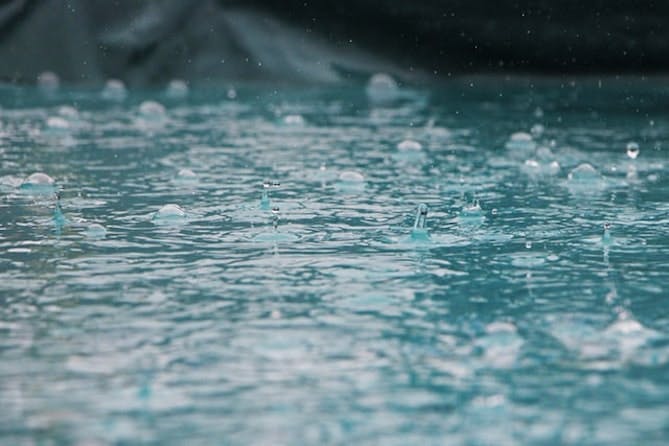
After a period of heavy rain—which, let’s face it, is a fairly common occurrence in the UK—the only foolproof way to avoid driving through water is to lock up the car and stay home. And while this is occasionally necessary (during red weather warnings, for example), sometimes you do need to get out and about. But not only can flood water damage your engine and brakes, it also carries a serious risk of aquaplaning. We wish it were as cool as it sounds—or looks in films—but aquaplaning on public roads is downright scary. We’re here to tell you about the things you should, and shouldn’t, do if you ever find yourself in a situation where you’re out of control—and how to reduce the chances of it happening in the first place.
What is meant by aquaplaning?
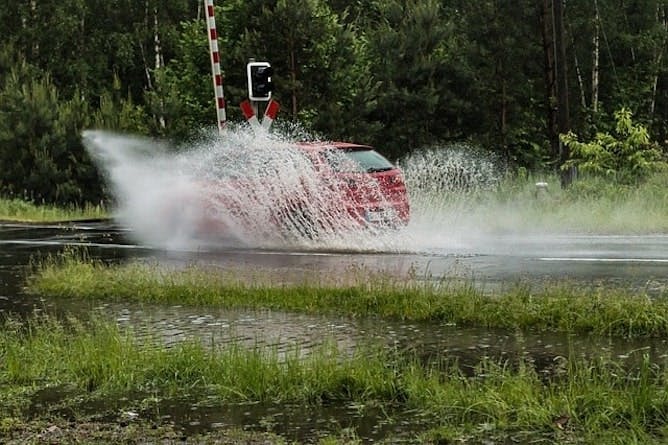
Aquaplaning (or hydroplaning, as it's also known) is where water on the road comes between your vehicle’s tyres and solid ground. When your tyres no longer have contact with the road surface, they have nothing to grip onto and you can lose control of your car.
Steering, accelerating and braking can all go out the window when you’re aquaplaning, and the back end of your car may feel like it’s skidding out, or ‘fishtailing’, where it drifts sideways independently of your steering.
When you drive through water—often after a storm or heavy rainfall—it can accumulate against your tyres quicker than your car can displace it. The liquid has to go somewhere, so it’s pushed underneath your tyres, separating them from the road.
When are you most at risk of hydroplaning?
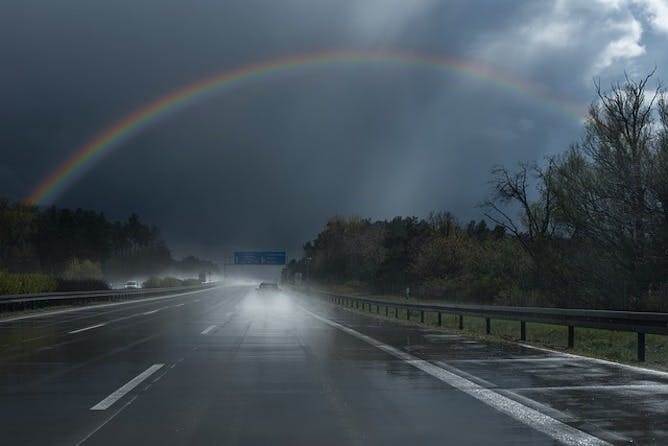
Aquaplaning is a particular risk in places where rainwater builds up, such as:
- Dips in the road
- Low lying areas
- Roads near large bodies of water, such as rivers, which can burst their banks and overflow
- Uneven road surfaces
It's often difficult to see standing water, and hitting it at speed increases the chances of hydroplaning, as do poor tyre conditions.
What does aquaplaning feel like?

If you’ve ever been in a vehicle when it hydroplanes, you’ll know the feeling of losing control. It can be a similar experience to skidding on ice. As a driver, you’ll know you’re aquaplaning if you’re driving through water and:
- Your steering feels lighter than normal
- The engine sounds louder
- Your revs suddenly increase, despite not changing gear
- Your rear end fishtails or drifts side-to-side
How do you avoid aquaplaning?
If there is an alternative to driving through flood water, you should take it. That might mean:
- Avoiding inessential journeys
- Going a different route
- Driving around large puddles
However, we know it isn't always possible to stay high and dry. Thankfully, there are several things you can do to reduce the chances of losing control when you do come across surface water.
Good tyre tread
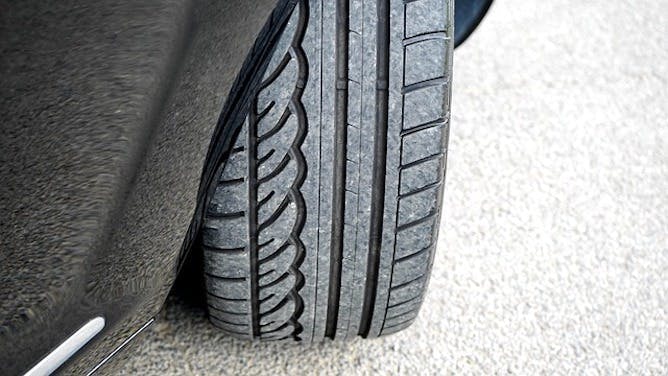
Keeping your tyres in good nick is one of the most important things you can do to avoid aquaplaning. Tread refers to how deep the grooves in your tyres are, and therefore how much they can grip the road. You probably know there’s a legal limit for tread—1.6mm for the inner three-quarters of your tyre. Any less and you’re not allowed to drive on the roads.
But there's a recommended tread depth of at least 3mm. In wet weather, you’ll stop significantly faster with this level of tread than if you run your tyres down to the legal limit. Good tread can also remove quite a bit of water from your path, significantly reducing the chance of it getting forced underneath your wheels and creating problems.
The easiest way to check the tread on your tyres is to insert a 20p into the deep groove. If you can no longer see the outer ring on the coin, your tyres are in good condition. If you can, that’s a good indicator that you should replace them ASAP. Remember, you need to check around the whole circumference of your tyres. Cash-free? You can always buy a tyre tread gauge to keep in your car.
Optimal tyre pressure
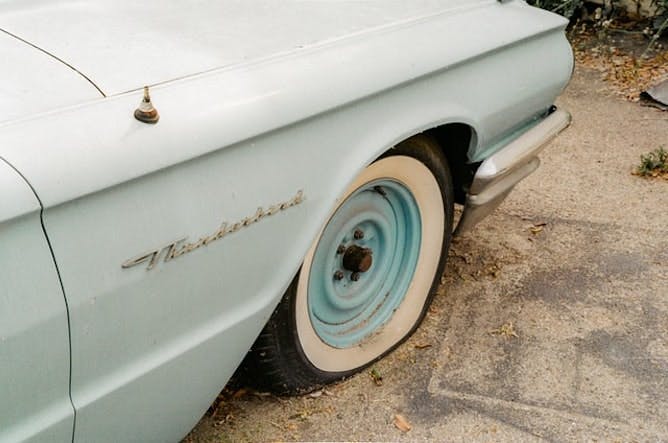
The right air pressure in your tyres is important to provide a balance between helping your car roll efficiently and maintaining good grip on the roads. You should check the pressure every three months or so—you can do this at many petrol stations—and pump them up if need be. Find the correct air pressure for your car in the vehicle handbook. It might tell you a different optimal pressure for winter, so set a reminder in your phone or a note in your planner, to take a look in the autumn months.
Appropriate speed
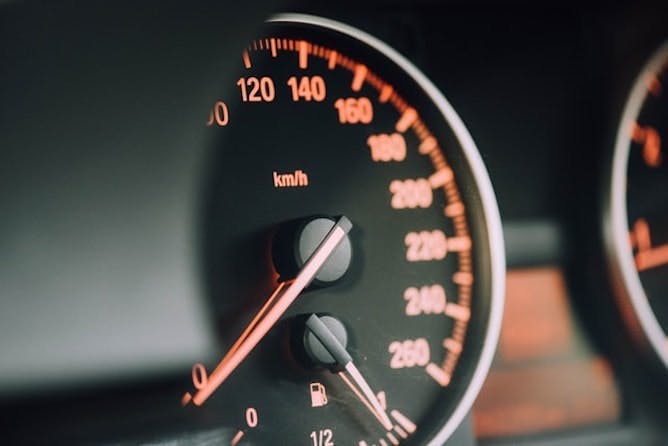
Although it’s always tempting to drive at the speed limit, remember that this is the maximum miles per hour you should ever travel on that road. You also need to take weather and traffic conditions into account and adjust your speed accordingly. Water just 2.5mm deep can cause you to aquaplane, and if you hit it at speed, your vehicle is less able to displace the water quickly enough—putting you further at risk.
So when there’s precipitation, or there’s been recent heavy rainfall, just remember to take things a bit slower. Where you are aware that you're crossing water, you should drive really slowly—at about 3-4mph.
Use vehicle tracks
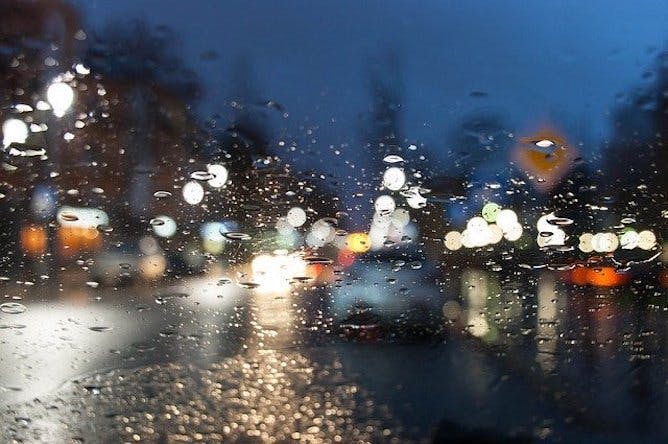
Helpfully, any vehicles you’re following will have had to navigate the flooding before you get to it. If you can drive on their tracks, some of the water will already have been pushed out the way, leaving your path a little clearer and safer.
And, to keep safe in wet weather conditions in general…
Space out
Stopping distances double in wet weather, so you need to leave a bigger gap between you and the vehicle in front. When there’s surface water on the roads you should keep even further behind, in case another driver loses control.
Turn off cruise control
This won’t apply to all drivers, but if you normally use cruise control, it’s best to turn it off in wet conditions. If you do plough unexpectedly into a deep puddle, you’re going to want as much control as possible over the car.
How should you react to aquaplaning?
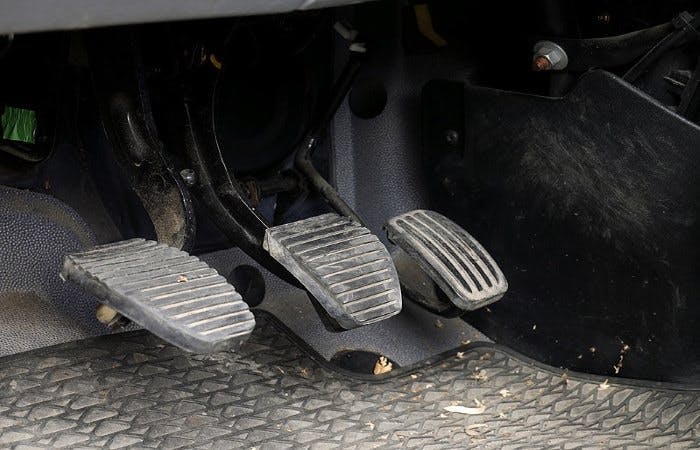
It’s best to know what you’re up against before you’re in a situation where you might panic. If you start aquaplaning you may be tempted to brake harshly—but that’ll just make things worse. Instead, ease off the accelerator slowly and keep your steering straight. When you start to regain traction, brake gently to slow your car down.
Key points
- Ease off accelerator
- Keep your wheel straight
- Brake gently when you get more control
What to do after driving through water
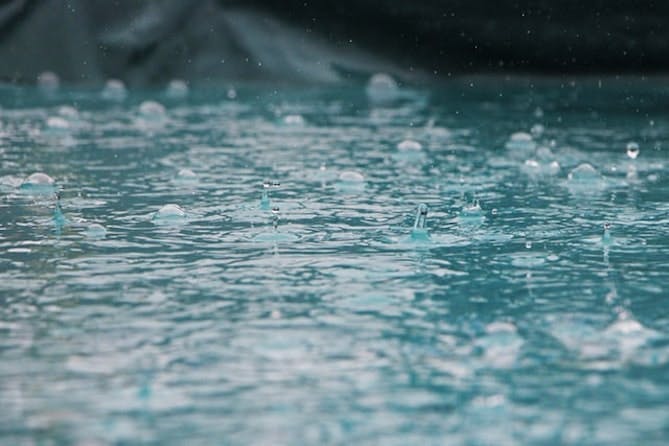
Water can cause a lot of damage to your car, so you should always check your brakes after driving through water. To test them, drive slowly in a low gear while very gently applying pressure to your brake pedal. This will also help them dry out if they have gotten wet. It’s worth practicing this so you know how to do it and what it feels like.
If you stall after you’ve exited the water, this can indicate that your engine has sucked in some liquid. Don’t try to restart your car. Now’s the time to use your emergency breakdown cover, so that a mechanic can make your vehicle safe and road-ready again. Even if you don’t stall, keep listening out for changes to your engine noise, so you know whether it needs checking over. You should make sure that all your lights are fully functioning and you may also need to dry out the carpets in your footwells, to avoid issues like mould.
FAQs
How deep water can you drive through?
Never try to drive through water that’s deeper than 10cm or any depth of fast-moving water, which could sweep your vehicle away. Remember that water may be deeper in the middle so if you’re not totally sure about whether your car can handle a puddle, flood or ford, err on the side of caution. Proceeding could be a very dangerous (and very expensive) mistake.
My car is sputtering after driving through water. What should I do?
Your engine only needs to take in an eggcup-full of water to cause some serious damage. Any unusual noises coming from your engine signifies that there may be water present, so the best thing to do is get to a garage or call your breakdown provider.
What happens if my car gets stuck in the water?
If your car gets stuck, the AA advises that it’s usually best to remain in your car and call for backup. If the water’s deep or fast-flowing, you might get into difficulty if you try to get out—and flood water is often highly contaminated, which could cause you to become ill.hhhhhhh
What else should I do when driving in heavy rain?
Visibility in heavy rain can be very poor, so make sure you’ve got your headlights on. Drive slowly and keep a good distance from vehicles in front of you in case you need to stop suddenly. You can check out all of our wet weather driving tips here.
Subscribe for driving advice, offers & more
We'd love to let you know about our courses, news and offers via email. You may unsubscribe at any time.
Star Genie Limited trading as PassMeFast. Company number 10093359
Copyright © 2024 owned by Star Genie Limited
PassMeFast, Blue Tower, MediaCityUK, Salford, M50 2ST
